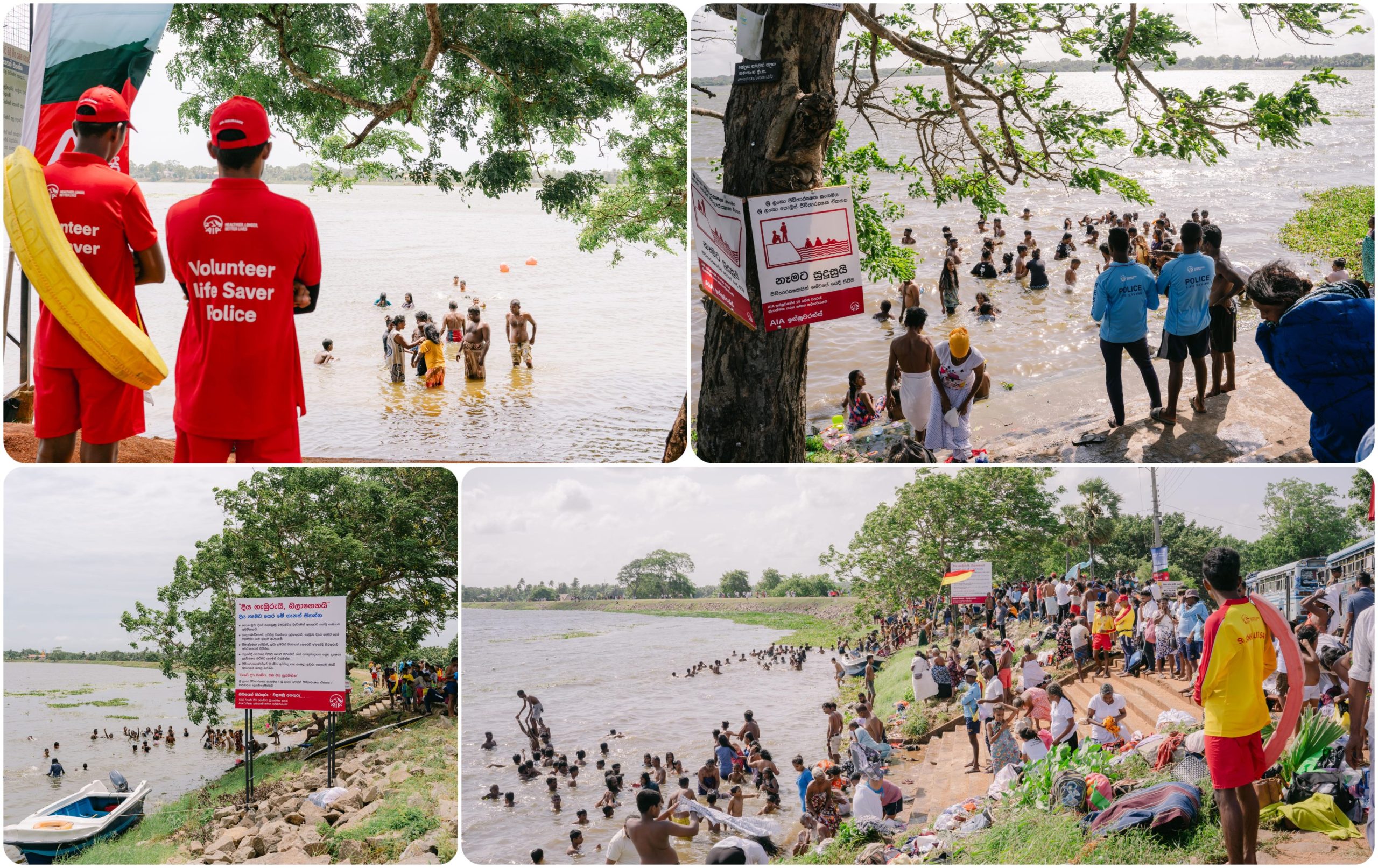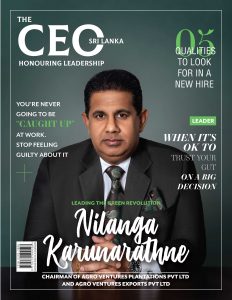Nimal Ratnayake – Chief Marketing Officer of the Lanka Hospitals Corporation PLC
The current Chief Marketing Officer of the Lanka Hospitals Corporation PLC, Nimal Ratnayake, is a man dedicated to his calling.
Having begun his career in the pharmaceutical industry, where he served a number of Fortune 500 and multi-national companies, such as Pfizer, 3M and Reckitt Benckiser, as well as some Indian and local conglomerates, Nimal excelled in various managerial positions in Sri Lanka and overseas thanks to his passion and commitment to Sales and Marketing. He has over 26 years’ worth of industry experience.
“Working in healthcare you’re faced with a fast-paced workday in an atmosphere that is constantly changing. This type of environment challenges professionals and leaves them with a sense of fulfilment. Moreover, I believe in being a truly compassionate person, helping those most in need.”
As a marketing professional, Nimal has worked in several industries. Speaking of what differentiates marketing in the Healthcare industry from any other, Nimal explained, “I have had the opportunity to work in many other key industries, such as Automobile, Architecture & Construction, Finance and Retail. I’ve even worked for the world’s biggest retail network – Walmart, while I was in the UK, following my Master’s Degree in Manchester. In many respects, marketing in the Healthcare industry is not substantially different from other industries. The basic business marketing principles that apply in other industries, including market and competitive research, strategic planning, budgeting, segmenting, targeting, positioning, branding, marketing strategies, tactics, media options, public relation opportunities, implementation processes, tracking processes also apply here as well. However, there are several obvious and subtle ways in which the approach to marketing in the Healthcare industry is different in comparison to other industries. In simple terms, healthcare marketing refers to the use of marketing strategies for the purpose of protecting and improving the population’s health, by promoting information about health and the best treatment options. The biggest difference between traditional marketing and healthcare marketing is the way we connect with our clients. We know that most people who are searching for the best doctors, hospitals and information, are anxious about their own health or that of a loved one. When you’re connecting with people in this kind of state of mind, it’s very different from offering a great deal, or any other product or service. Our approach must always come from the heart, and it’s important to build and maintain the customer’s trust. Healthcare marketers must have a warm touch, plenty of respect and empathy towards patients, as well as an air of a friendly authority. The best healthcare marketing strategies will highlight the effectiveness and safety of your services, and that you as a healthcare provider are adequately trained and credentialed to treat and cure. Innovation has always held a vital place in the Healthcare industry, after all, your patients are counting on you to provide the latest medical technology, information and wellness. There are many challenges when it comes to maintaining the necessary balance between a warm, yet the authoritative voice in healthcare marketing, but with a thoughtful approach it’s so rewarding. Our goal should be to be successful, not through selling products, but through building trust and becoming a reliable resource.”
Describing the current status of the hospital sector, Nimal said, “The private sector continues to play a pivotal role in providing healthcare to the vast Sri Lankan population. There are about 200 registered private hospitals and 23 private ayurvedic hospitals, according to the Central Bank of Sri Lanka. The regulation of the private healthcare sector is vital to ensure the standards of quality of the business and service, in order to prevent patients from being exploited by the sector. Amid rising income levels, increasing communicable diseases and an ageing population, the demand for private healthcare services has grown rapidly over time. The main healthcare trends are on the technological side, as equipment for surgical and imaging facilities have been developed rapidly. One major impediment to the growth of the private healthcare sector is insufficient health insurance penetration, which makes services less affordable for the general public.”
Comparing the Sri Lankan Healthcare industry to those of the other South Asian nations, Nimal commented, “In comparison to other South Asian countries, our public healthcare system is admirable. Most private hospitals in Colombo have gained international accreditation. Nevertheless, compared to its neighboring countries, Sri Lanka has more miles to cover in terms of medical tourism. The annual growth of medical tourism grew by about 17% from 2013 to 2019, while the global medical tourism market was worth US$ 37 billion. In the region, India, Singapore and Thailand have gone a long way in medical tourism, while we’re barely scratching the surface. Against this background, we have witnessed many initiatives to position Sri Lanka as a destination for medical tourism, by targeting services such as orthopedic – hip and knee transplants, dental, cosmetics as well as Ayurveda treatments for various ailments.”
In addition to the plunge in current economic conditions, which are projected to reach a growth of 3.7% in 2020, policy changes and security concerns, Nimal believes that attention must be paid to the challenges related to medical management, such as the streamlining of accident and emergency services, as well as the shortage of skilled nurses and other medical professionals.
“We also need to overcome the challenges that come with global medical technological advancement trends, particularly in the case of surgical and imaging facilities, which have developed rapidly. The rising cost of private healthcare remains a challenge in Sri Lanka and across the globe. The private healthcare sector needs to expand outside Colombo and the Western Province, by encouraging service providers to increase the accessibility of private healthcare. Existing major private hospitals have increased their capacity in major towns and it is now saturated. Private healthcare should embark on strategic tie-ups with both public and regional private healthcare providers to reach more people, rather than focusing on individual growth. We must embrace government efforts in promoting the country as a destination for medical tourism, which bodes well for the sector.”
Discussing the impact of the country’s ageing population and the rise of NCDs upon the hospital sector, Nimal stated that the rise of non-communicable diseases is a growing challenge, especially due to current lifestyle trends. According to him, the best way to tackle the issue is by raising awareness. “A method, which is currently being addressed by the government and private health entities via various educational programs. With regard to the country’s ageing population, which will have the third oldest population in Asia by the year 2025, we need to propagate health insurance, especially among the upper-middle-income groups, thereby reducing the burden of private healthcare costs on households, particularly in the context of retirees and pensioners.”
Questioned about how Lanka Hospitals has revolutionized the Healthcare industry and pioneered medical tourism, Nimal responded,
“Lanka Hospitals Corporation PLC commenced operations in Sri Lanka in 2002, under the brand name – Apollo Hospitals, a part of the chain of Apollo Hospitals in India. As the only purpose-built private hospital of its kind in Sri Lanka, and today under the brand Lanka Hospitals, we continue to dominate and lead the healthcare sector. We are considered to possess some of the best healthcare facilities in the country and the region. In the past 17 years, Lanka Hospitals has transformed the Healthcare industry of Sri Lanka through infrastructure development and the advancement of its use of modern technology, products and services, and being able to deliver healthcare that is on par with any hospital in the Asian region. Being the only private hospital in Sri Lanka that has been endorsed by ‘The Medical Travel Quality Alliance’ (MTQUA), which ensures the highest standards of excellence in delivering treatment and care to travellers and tourists, we also play a critical role in the nation’s strategy to provide world-class medical care, whilst balancing the equation of affordability and accessibility for all Sri Lankans as well as its focused foreign markets. We have already ventured into Seychelles and the Maldives by establishing medical centres and strategic tie-ups with local hospitals. As we all know, Sri Lanka is an incredibly marketable destination with limitless opportunities. It has not been an easy journey, but Lanka Hospitals has come a long way to reach this point with a resilience that other hospitals probably haven’t demonstrated yet.”
On the topic of medical tourism, Nimal further noted, “Medical tourism is the globalization phenomenon, where people who live in one country travel to another country for various forms of medical care, and is expected to grow considerably in the next decade. I strongly believe tourism is the way forward for Sri Lanka, as we’ve got so much potential, not only in the case of medical tourism, but also sports, agri/eco, recreational, adventure, cultural and more. In medical tourism, it could be for an emergency organ transplant, spinal surgery, elective cosmetic surgery, hip and knee replacement or even dental and so on. As a country, we are fully geared with all the essential medical resources that are comparable or superior in every respect to what is available in the most developed countries of the world. Moreover, Asia is one of the most sought-after regions in terms of medical care. Medical tourism in Asia is thriving, because of the low cost for high quality healthcare delivered by doctors and surgeons trained at the top institutes in the US and Europe. The president’s manifesto anticipates annual tourist arrivals increasing to 7 million, with yearly foreign exchange inflows of US$ 10 billion. The action plan includes improving efficiency, regulating the sector, promoting household and community-based tourism, and support through investment. I believe it will be advantageous to focus on the fast-growing Medical Tourism industry with substantial foreign and local direct investments. The industry must map its strengths and world-class facilities, carve a niche and provide selective experiences, while increasing awareness and access to available healthcare and other tourist attractions. The internet infrastructure should also be further strengthened as an increasing number of modern travelers use online services in selecting medical tourism and destinations.”
“Cardiovascular diseases (CVDs) take the lives of 17.9 million people every year, that’s 31% of all global deaths. The government, health ministry and private education systems are conducting more medical exhibitions and numerous public events with the aim of raising awareness about such diseases. This is complemented by events such as, “World Heart Day” on the 29th of September, which scale up the prevention of heart attacks and strokes. Lanka Hospitals has been the pioneer of heart surgeries in the private medical sector, in relation to both adult and pediatric, and we have been working closely with the Sri Lanka Heart Association and other like-minded institutions to raise awareness on cardiac-related diseases, which are the biggest causes of death. Lanka Hospitals has successfully hosted the Annual Heart Walk, jointly with the Sri Lanka Heart Association.
Life-changing seminars and annual academic sessions have marked “World Heart Day” throughout the past years. We promote “World Heart Day” in line with the annual theme designated by the World Heart Federation, in order to promote preventative measures to reduce the risk of cardiovascular diseases. In addition, we have developed a plan to take effective action through comprehensive public health partnerships and programs”, replied Nimal, when asked about the activities planned and carried out by Lanka Hospitals in honour of World Heart Day.


